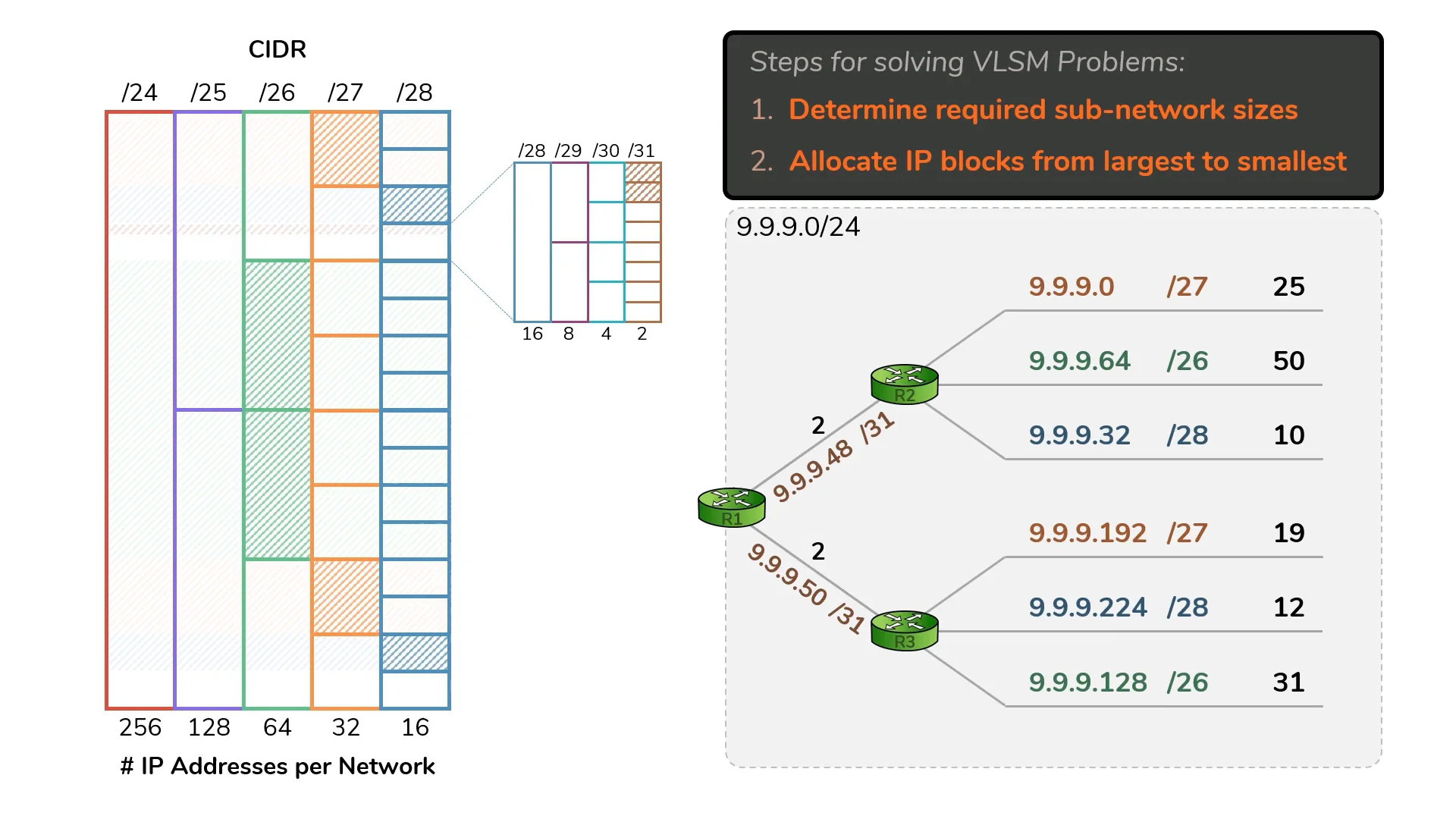PracNet Subnet Guide - VLSM
Practical Networking’s Subnetting Mastery playlist
PracNet Subnetting - VLSM (Variable-Length Subnet Masks)
FLSM (Fixed-Length Subnet Masks)
- Up until now, we’ve been using FLSM (Fixed-Length Subnet Masks) to subnet our networks.
- This means that all of the subnets use the same prefix length.
- (ie. subnetting a class C network into 4 subnets using
/26).
VLSM (Variable-Length Subnet Masks)
- VLSM (Variable-Length Subnet Masks) is where you make subnets of different (variable) sizes, in order to use your network addresses more efficiently.
VLSM Steps (Through PracNet)
- Determine required sub-network sizes.
- Allocate IP blocks from largest to smallest (IP blocks is referring to the subnets that we’ve got).
 |
|---|
| PracNet’s Question and Answer |
- PracNet solved R2’s subnet sizes inefficiently on purpose, in order to teach us how to use VLSM.
- R3’s subnet sizes were solved following steps 1 & 2.
- The point-to-point connection between R1-R2 & R1-R3 was solved using
/31, as it allows for 2 addresses if we don’t allocate a Network Address and Broadcast Address, however,/30would work as well. (According to Jeremy, it’s recommended to use/30in the exam.)
VLSM Steps (Through Jeremy’s IT Lab)
Despite the steps being a bit different, it’s still the same concept and VLSM is done the same way.
- Assign the largest subnet at the start of the address space.
- Assign the second-largest subnet after it.
- Repeat the process until all subnets have been assigned.
VLSMSolution-PracNet-Subnet-guide---VLSM-20240316190140400.webp) |
|---|
| Jeremy’s Question and Answer |
My solution of the question in Inkodo:
- Additionally, I calculated the following variables in each subnet:
- Network Address
- Broadcast Address
- First Possible Address
- Last Possible Address
- Number of Usable Hosts
-MySolution---PracNet-Subnet-guide---VLSM-20240316190401547.webp) |
|---|
| My solution |